Disinfection of water in a well: features of the disinfection procedure
In your well, the water became dirty, and its smell leaves much to be desired? You must admit that such water is not only unpleasant to use as drinking water, but also very dangerous. After all, the microorganisms contained in it can lead to various diseases.
Do you plan to disinfect the source but don’t know how to do it right? We will help you deal with the intricacies of this process and tell you what tools you can use. We have described in detail a set of measures aimed at eliminating unpleasant odors and pollution.
We provide effective compositions used for disinfection, present thematic photos and videos with valuable recommendations. Correct and timely disinfection of water in the well, performed in accordance with our advice, will allow us to use it for drinking, household needs and watering without fear.
The content of the article:
When is disinfection necessary?
Disinfection involves two steps: cleaning the mine well and water disinfection. All wells undergo this process, regardless of their purpose and frequency of use.
The reasons for which it is necessary to carry out disinfection measures can be very different:
- flooding due to spring flood;
- penetration of sewage or groundwater;
- penetration of agricultural or industrial chemicals;
- contact with corpses of birds and animals;
- intensive exploitation of the well, as a result of which subsidence of bottom soil occurs;
- the formation on the walls of mucus, dirt, salt and mold deposits;
- the presence in the open well of small debris, dust.
It is recommended to carry out preventive disinfection of the well at least 1 time per year, and it is better to do this twice - after the spring flood and early spring.
Remember that poor-quality, polluted water not only has bad taste and smell, but also is a breeding ground for the propagation of pathogenic microorganisms dangerous to humans and farm animals.
That is why it is necessary to regularly clean well water and the mine.
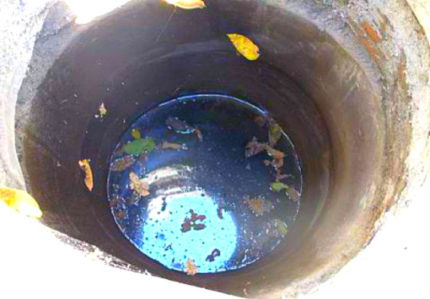
Preparation for disinfection treatment
Preparatory work is recommended to be carried out without fail immediately before the disinfection procedure. The speed and quality of disinfecting treatment largely depends on the correctness of preparation.
First of all, it is necessary to pump out water. If there is little water in the well, then it will be enough to use surface pump.
If the water level is significant, then you need a powerful submersible pump. Before starting the pump, you need to remove floating debris from the well, the net on a long handle with a fine mesh is best for this purpose.
After pumping water, a descent into the well is carried out and its bottom and walls are inspected for cracks, leaks, deposits. In the presence of cracks they must be eliminated special waterproofing solution. It also removes debris, algae, and sludge from the walls of the well.
Tools used - hard brushes, spatulas. The bottom of the well is cleaned of sediment, as far as possible the old bottom filling is removed and a new one is filled.
As backfill fine gravel, gravel, sand can be used. Expanded clay cannot be used because of its too low specific gravity and high toxicity.
If plaque is present on concrete rings, it should also be eliminated. For this, various substances are used, the composition of which depends on the nature of the deposits. Salt deposits are eliminated by acid-containing solutions, for example a weak solution of hydrochloric acid or vinegar.
Corrosion stains are recommended to be carefully removed with a jackhammer or grinder, and the surface treated with a waterproof anti-corrosion compound. In the presence of moldy deposits, treatment with copper sulfate is required.

Disinfectants
Disinfection of water in the well is carried out using special means that have antibacterial and disinfecting properties.
They must have the following properties:
- effectively eliminate pathogenic microorganisms, inhibit their development
- be safe for the human body
- do not harm the walls of the well
- easy to rinse off.
Most often, for the disinfection of well water and mines, compositions are used, which we will discuss in more detail in the next part of the article.For pumping water that has undergone the disinfection procedure, it is better to use inexpensive pump, which after use is not a pity to leave for good.
Remedy # 1 - effective bleach
You can buy 1% chlorine powder at any hardware store.
To accurately calculate the amount of bleach, the following experiment is carried out:
- take 10 gr. bleach and dilute in 1 liter of clean water;
- we take 3 containers of 200 ml and are filled with water from the well;
- in the first container add 2 drops of a chlorine solution, in the second - 4 drops, in the third - 6 drops;
- stir water in all containers and wait 30 minutes;
- after the time has passed, we check each container for the presence of a chlorine smell - it should be barely noticeable.
Considering that 25 drops are contained in 1 ml of bleach solution, we get that for disinfecting 1 cubic meter of well water, 400 ml of solution is needed. Knowing the volume of water in the well, it is easy to calculate the need for the chlorine solution required for the disinfection procedure.
Disinfection Instructions:
- We pour the solution into the well and for 10 minutes we mix the water in it with the help of a long pole or brush. If the volume of the well is large, then it is advisable to mix using a bucket on a rope, which scoops up water, and then spills back.
- The well is closed with plastic wrap or a dense cloth for 6-10 hours in the summer or 12-24 hours in the cold season. It is important to prevent direct sunlight from entering the well, under the influence of which chlorine decomposes, significantly reducing the effectiveness of disinfection.
- If, after the specified time has elapsed, the smell of chlorine is completely absent in the well, then disinfection should be repeated, as this indicates the destruction of the chlorine compound and the low efficiency of disinfection measures.
- The walls of the well are washed first with chlorinated water, and then clean.
- We pump out water until the smell of chlorine is felt.
When using bleach, strict safety measures are required to prevent the solution from getting on the skin, plastic and metal surfaces.
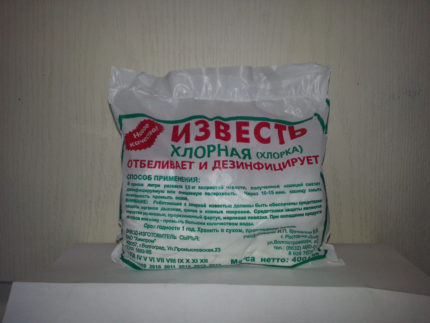
Remedy # 2 - Affordable “White”
Another inexpensive way to quickly and efficiently disinfect a well. It was experimentally established that the optimal concentration is 1 liter of “Whiteness” per 1 reinforced concrete well ring of water.
The technology for disinfecting is exactly the same as when using bleach: the solution is poured into the well, the walls are washed with a brush, a long brush or just a cloth wound on a pole.
Sometimes, special garden sprayers are used to apply the chlorine solution or “Whiteness”. This simplifies the procedure for cleaning the walls of the well, but do not forget to thoroughly flush the equipment after completion of work.
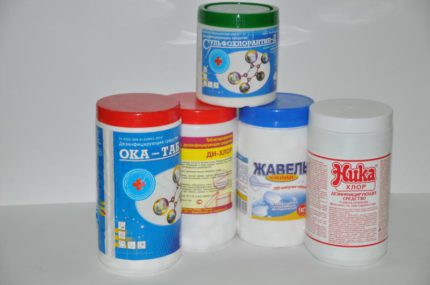
Means # 3 - fast and safe potassium permanganate
This method of disinfecting a well is sparing, but its effectiveness is significantly inferior to the chlorine method. However, in some cases, you can use potassium permanganate (potassium permanganate) to disinfect the mine and water in the well.
To prepare the solution, take 1 tablespoon of potassium permanganate per 10 liters of warm water. The solution is thoroughly mixed and poured into the well. Leave the solution for 30-60 minutes and pump out the water several times.
After cleaning, the dry manganese solution is washed well wallsand a mesh (ordinary sieve) with 3-5 g of manganese is placed at the bottom, which will be there permanently, having a disinfecting and antibacterial effect. Instead of manganese, you can put silicon chips on the bottom, which also has disinfecting properties.
Remedy # 4 - iodine solution as an emergency measure
Regarding this method of disinfection, the opinions of experts differ. Some believe that iodine is an excellent antibacterial agent that destroys pathogenic microorganisms and prevents the environment from multiplying.
Others say that the necessary bactericidal concentration will make well water unsuitable for drinking and watering.
In any case, iodine disinfection can be used when it is not possible to completely disinfect the well. To do this, you need to prepare a solution - 3 drops of iodine per 1 liter of water (3-5 liters of water are enough for 1 reinforced concrete ring) and pour it into the well. This measure will help slightly delay the cleaning of the well and improve water quality.
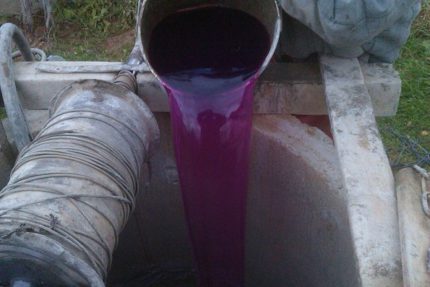
Remedy # 5 - Tablets
The modern market of household chemicals offers a convenient option for disinfection of a well - chlorine-containing tablets Aquatabs, "Septolite", “Ecobreeze” other.
The average consumption of such tablets is 4 tablets per bucket of water for one well. The exact dosage is given by the manufacturer in the instructions for chlorine-containing tablets. To prepare solutions, a plastic or enameled bucket is used, water is taken at room temperature.
The disinfection procedure is carried out in two stages:
- Preliminary stage. Water is pumped out of the well, the bottom and walls are cleaned of contaminants and deposits. After this, the walls are irrigated with the prepared solution, for this you can use various spraying devices or just a rag on a pole, a brush. After applying the composition, you need to wait 30 minutes, and then rinse the walls with clean water.
- Water disinfection. The well is filled with water and the solution obtained by dissolving chlorine-containing tablets is poured into it. The number of tablets depending on the volume of the well is also indicated in the manufacturer's instructions.
For disinfection, the water in the well is mixed with a disinfectant, and the well is tightly closed with polyethylene or a dense cloth. Aged from 3 to 12 hours. After this, it is necessary to pump out water until the smell of chlorine is completely gone.
The use of tablets in comparison with bleach and whiteness has the following advantages:
- high efficiency of cleaning and disinfection;
- ease of use, ease of preparation of the solution;
- shorter exposure time of the solution in the well;
- safety of use.
The disadvantages of chlorine-containing tablets include their high cost.
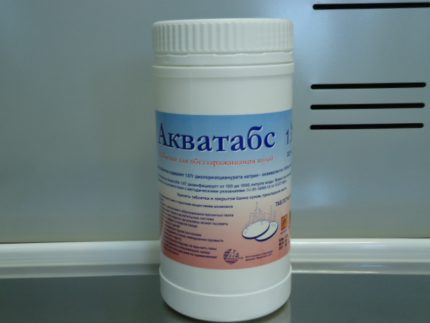
Physical Disinfection Methods
The modern methods of disinfection of well water include ultrasound and ultraviolet cleaning. Both methods are highly efficient, environmentally friendly, but their implementation requires the installation of expensive equipment.
It is advisable to install such equipment if the water from the well is used in the autonomous water supply system of a house with year-round living.
The UV-cleaning device is equipped with an electronic unit that automatically regulates the water supply to the cleaning unit. Radiated ultraviolet light destroys all known microorganisms without changing the taste, smell and color of the water.
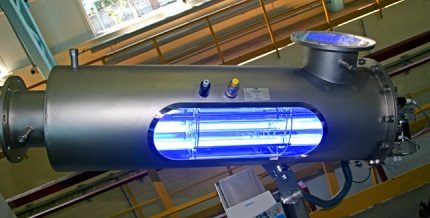
In addition to the high cost of equipment, this method has another drawback: with an open well, there is the possibility of secondary water pollution.
For the implementation of ultrasonic cleaning, equipment is used that emit ultrasonic waves, which are also harmful to microorganisms.
Of course, these disinfection methods are considered the most advanced and safe, but their use in most households is not yet possible due to the high cost and inadequacy of wells.
Actions after disinfection
After the disinfection procedure, which was carried out using chlorine-based products, it is recommended to observe the following recommendations:
- Do not use well water during the first 24 hours after the end of disinfection.
- For 5-10 days, it is necessary to boil and / or pass water from the well through the filter before use.
- If the smell of chlorine is present in the water, then a full pumping of the well is required.
After all these steps, it is advisable to carry out a chemical well water analysis to assess the quality of cleaning and confirm its safety.
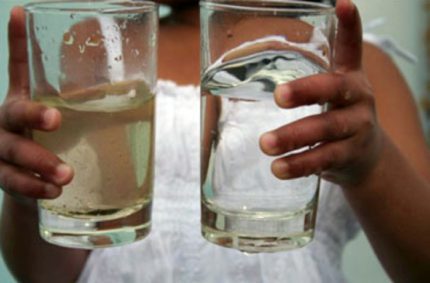
Source pollution prevention measures
In order to carry out disinfection measures as rarely as possible, but at the same time use quality water, it is necessary to observe a number of measures aimed at preventing well contamination.
These measures include the following:
- Do not leave the well open;
- maintain a distance of at least 20 meters from the well to the sewage and wastewater system;
- reliably seal the walls of the well, preventing the penetration of groundwater;
- use submersible pumps with remote injectors, this significantly reduces the number of leaks;
- comply with sanitary standards, do not pour waste into the well.
Following these simple measures will prevent clogging and siltation of the well, which are the most likely causes of water quality deterioration.
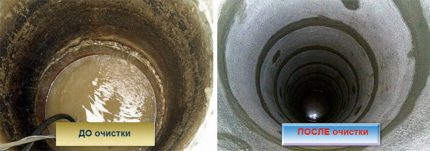
Conclusions and useful video on the topic
Video # 1. A detailed story about preparing a well for disinfection, pumping water and cleaning the bottom fill:
Video # 2. Chlorine - a substance used to disinfect well water:
Video # 3. Tableted means for disinfecting water in a well:
Do not neglect preventive cleaning and disinfection, which allows you to operate the well for a long time and without problems. Processing should be carried out in a timely manner, choosing the most suitable tool in your case.
If disinfecting measures are to be performed on their own, then you need to stock up on personal protective equipment, especially when working with caustic compounds such as chlorine or whiteness.
From all those wishing to share their personal experience in cleaning well mines or in disinfecting water, to receive answers to questions of interest, we are waiting for participation in the discussion of the topic. Please write comments in the block below the text of the article.

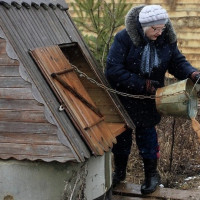 Why is muddy or yellow water in the well: causes of pollution and methods for their elimination
Why is muddy or yellow water in the well: causes of pollution and methods for their elimination 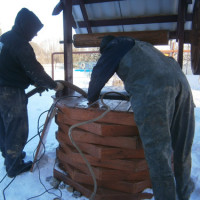 Water purification from a well: an overview of the best and most effective ways
Water purification from a well: an overview of the best and most effective ways 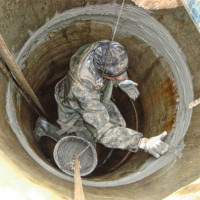 Do-it-yourself well repair: routine and emergency repairs
Do-it-yourself well repair: routine and emergency repairs 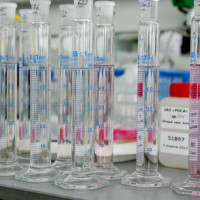 How to properly analyze the water from the well and disinfect it after checking
How to properly analyze the water from the well and disinfect it after checking 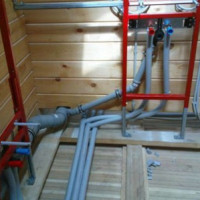 How to conduct water in a private house: arrangement of a source of water supply + water supply to the house
How to conduct water in a private house: arrangement of a source of water supply + water supply to the house  How much does it cost to connect gas to a private house: the price of organizing gas supply
How much does it cost to connect gas to a private house: the price of organizing gas supply  The best washing machines with dryer: model rating and customer tips
The best washing machines with dryer: model rating and customer tips  What is the color temperature of light and the nuances of choosing the temperature of the lamps to suit your needs
What is the color temperature of light and the nuances of choosing the temperature of the lamps to suit your needs  Replacement of a geyser in an apartment: replacement paperwork + basic norms and requirements
Replacement of a geyser in an apartment: replacement paperwork + basic norms and requirements
We rented a summer cottage for the summer. Already when he moved the family, it turned out that there were frequent problems with the water supply system, with water supply. But there was an old well on the site. To avoid trouble (I didn’t want to pick up E. coli) I ordered ultraviolet water purification. Yes, it turned out to be expensive. But as a temporary measure - that’s it. The well began to cover with boards so that dust and small debris did not fall into it.
If this was not your summer residence, and you rented it for such a short period of time - for the summer, wasn’t it easier to attend to another source of drinking water, and use the well purely for household needs?
Three months is quite simple to live on bottled water. It will be cheaper and easier. Is it wise to clean a well in someone else's country house that you just rented, and in such an expensive way as cleaning with ultraviolet light? Moreover, this method is not very suitable for a well that is at least covered with boards, at least do not close, there is still a risk of re-contamination.
Recently bought a house in the courtyard of which is a well. It was dirty enough, but we did not use it. But when the problems with the water supply began, they thought about cleaning the well for further use. They cleaned it with bleach: the smell, of course, was specific, but it quickly disappeared and there were no problems with these. I liked the result: the water in the well is mirrored and tastes like from a store)
Perhaps this method is suitable for disinfection, but I would still not use the water from this well for drinking and cooking food later. Well, or some serious filters set, with additional disinfection (ultraviolet, for example).
The most delicious water in Baikal. But he was sold to the Chinese.